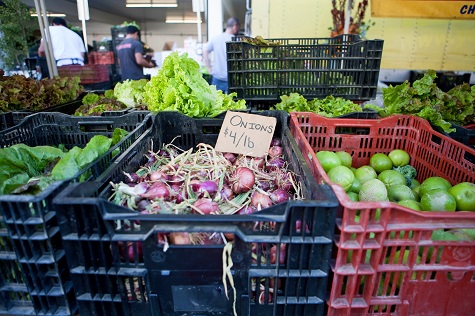 Recently, questions about the integrity of farmers’ markets have burbled up in the news, feeding the worries of some shoppers: How do I know my market has “real” farmers and can I believe their organic, pesticide-free claims? Who regulates the markets? Such concerns are not new; the L.A. Times covered market development and oversight back in 1890.
Recently, questions about the integrity of farmers’ markets have burbled up in the news, feeding the worries of some shoppers: How do I know my market has “real” farmers and can I believe their organic, pesticide-free claims? Who regulates the markets? Such concerns are not new; the L.A. Times covered market development and oversight back in 1890.
Rest assured there are many worthy markets, but there’s certainly room for improvement in this rapid-growth industry. Fruit expert David Karp and I (as the Public Member of the Certified Farmers’ Market Advisory Committee) spoke with Evan Kleiman on Good Food about the current state of markets, needed fixes, and the California Department of Food & Agriculture’s listening sessions on the topic.
What can you do? Become a smart shopper and support farmers’ markets that have a high standard of excellence. This doesn’t necessarily mean big, just good. Here are some tips to better understand your market (you’ll find more starting on page 21 of my book):
- The ratio of crops to prepared foods and crafts tells you a lot about a market’s focus. A farmers’ market can have many goals—community-building, downtown revitalization—but at its core it must be about growers direct-selling their own crops that they raised within a specified radius.
- Understand your market’s layout. In California, where farmers’ markets are state regulated, growers who want to sell direct must display a certificate listing their crops—hence the term, Certified Farmers’ Markets—as well as organic certification, if applicable. Certified producers must be grouped together, separate from non-agricultural stalls such as prepared foods. You shouldn’t see pita and taco stands intermingled among the produce. For example, the Santa Monica downtown markets place non-ag stalls at the “end-caps” of each street section; the Hollywood market divides on an east/west-north/south axis. (FYI, certified growers may offer certain added-value items made from ingredients of their own production, such as jam or salsa.)
- Does your market’s non-certified section promote or defeat the purpose of farmers’ markets? Non-production areas shouldn’t offer imported or resale produce that competes with items being sold by local farmers. The practice is confusing to customers. Ideally, prepared-food booths should source ingredients from the market in a nice, closed loop of mutual support.
- Know your market manager and operator/owner. We’ve been told to know our farmers, but it is management who makes the decisions. Whether your market is run by local government or a non-profit, its primary aim should be to benefit and protect local farmers and by extension, you.
- And of course, know the food. Every ounce of a farmer’s passion and hard work is revealed in the flavor of well-raised fruits, vegetables, meats, cheeses, and eggs.
There are more ways to learn about and improve the way we get our food. Slow Food USA’s mission is good, clean, fair food, and the organization is a leader in the healthy school lunch campaign. San Francisco-based Roots of Change is corraling the grass-roots food movement into California legislative change. At the local level, groups such as San Luis Obispo Botanical Garden and Santa Monica’s Garden School Foundation are changing things one edible garden at a time. Angelenos, don’t miss GSF’s Harvest Moon party.
Here’s one more way to make a difference: vote today!
 In other news, I’m delighted to announce the publication of Eat: Los Angeles 2011:The Food Lover’s Guide to Los Angeles. This third edition is loaded with new entries from Long Beach to Malibu, and its companion website is fully searchable. It’s been a kick to be part of this talented team on the prowl led by Colleen Dunn Bates: Miles Clements, Pat Saperstein, Linda Burum, Jean T. Barrett, Jenn Garbee, and Joseph Shuldiner.
In other news, I’m delighted to announce the publication of Eat: Los Angeles 2011:The Food Lover’s Guide to Los Angeles. This third edition is loaded with new entries from Long Beach to Malibu, and its companion website is fully searchable. It’s been a kick to be part of this talented team on the prowl led by Colleen Dunn Bates: Miles Clements, Pat Saperstein, Linda Burum, Jean T. Barrett, Jenn Garbee, and Joseph Shuldiner.
And, I invite you to “like” my new professional Facebook page so we can continue the food conversations started here. “You can talk about anything when you talk about food,” says culinary historian Barbara Haber. So true. Food can be the link to all topics, from the silliest to the most profound. Looking forward to covering the gamut with you.
Never thought I’d say this, but I’m having fun using my iPhone camera and Twitter app at the farmers’ market. I can snap and tweet my finds and inspirations in real time and then post what really happens when I get in the kitchen.
Like the day I had in mind some creamy potatoes with dill and a nice side of cavolo nero to go with my roast chicken from Lily’s Eggs. But when I began to cook, the potatoes and kale seemed to leap into the same skillet of their own accord. So, I sautéed them in a little olive oil, added a bit of water, a few late-season Juliet tomatoes, and olives for depth. Fifteen minutes later I had a gorgeous, robust side dish. I love when that happens, and I’m excited to take you on the journey with me. Follow me to the market!


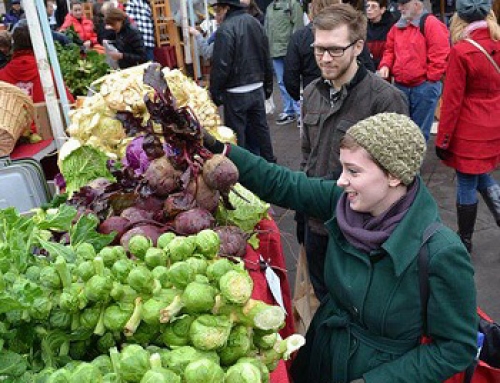
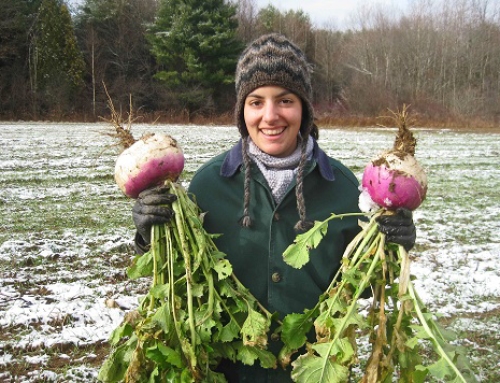
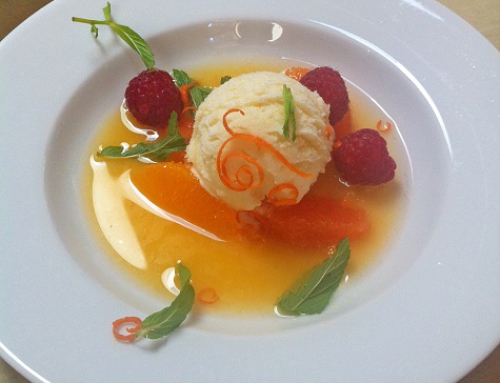

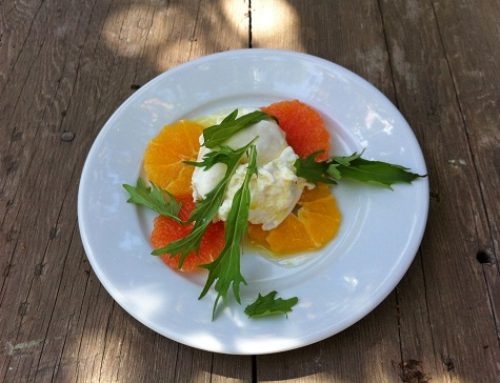
Leave A Comment